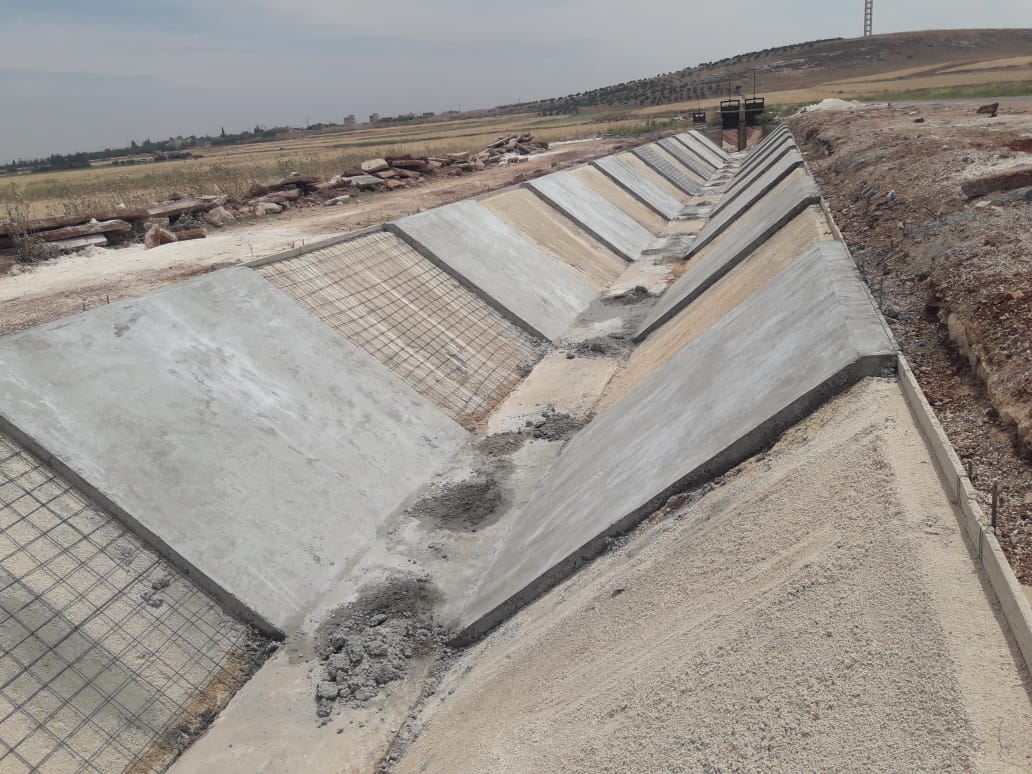Rebuilding resilience, one drop at a time: FAO and Norway join hands to restore irrigation for 14 000 families in earthquake-stricken Hama
_11zon-(2)555_11zon.jpg?sfvrsn=aea11da4_11)
Syrian farmer irrigating his land in Mahardeh, Hama governorate.
©FAO/Mazen Haffar
The earthquakes that hit the north of the Syrian Arab Republic on 6 February 2023, and the multiple aftershocks, caused significant destruction to agricultural infrastructure across five Syrian governorates. As part of its response, the Food and Agriculture Organization of the United Nations (FAO) conducted an assessment to evaluate the extent of the damage in the most affected rural areas and identify priority rehabilitation and recovery interventions. Based on the results of the assessment, the Organization identified a surface irrigation scheme in Mahardeh, Hama governorate, which urgently required rehabilitation as it serves as a vital lifeline for agricultural production in the region.
_11zon.jpg?sfvrsn=1ed9f354_1)
FAO personnel during a field assessment in Mahardeh, Hama governorate . ©FAO/Mazen Haffar.
This critical irrigation scheme channels water from the Mahardeh dam through an extensive network of approximately 43 km of canals. Covering an area of 13 000 hectares of land, it plays a pivotal role in sustaining the livelihoods of approximately 14 000 farming families (80 000 people). While it offers supplemental irrigation to winter crops, its importance is underscored during the summer cultivation season, from late June onward. The earthquake caused severe damage to a segment of the concrete-lined canals within the irrigation system, spanning approximately 6 km, along with several regulators and water intakes. The affected area is near the Mahardeh dam. Consequently, without rehabilitation, the system would be rendered non-operational, threatening the livelihoods of vulnerable farming families and the food security of their communities. Urgent efforts were thus imperative to ensure the operation of the irrigation system on time for the summer cultivation season.
Thanks to the timely financial support of Norway, through the Special Fund for Emergency and Rehabilitation Activities, FAO commenced the rehabilitation of the damaged canals in March 2023. Within three months, significant progress was achieved, and work is on schedule for the first irrigation by mid July 2023. The timely intervention was facilitated by multiple factors, including FAO's recent engagement in similar interventions in the area. Additionally, FAO benefits from a robust local network of technical experts, suppliers and service providers, contributing to the efficiency and effectiveness of its activities.

A reconstructed section of Mahardeh irrigation system. ©FAO.
Flowing forward: Scaling up recovery and resilience efforts to bring more fields to life
The destructive earthquake and aftershocks in February 2023 caused significant damages not only to the Mahardeh canals but also to other critical irrigation systems across the five affected governorates. Recognizing the wide-scale impact, FAO has initiated multiple interventions to address the damages in Hama, as well as other affected governorates like Aleppo and Lattakia. However, the full extent of the damage remains uncertain, as some systems were inactive during the non-irrigation season at the time of the earthquake.
FAO remains steadfast in its commitment to support the recovery of the agriculture sector and enhance the resilience of rural communities, which have already endured over 12 years of crisis, in addition to consecutive droughts. Without timely investment in recovery and resilience, more families will inevitably lose their livelihoods and enter a vicious cycle of food insecurity and dependency on unsustainable forms of humanitarian assistance. Through the Earthquake response and recovery plan (2023–2026), FAO is aiming to enable the most affected rural families to restore their livelihoods, build their self-reliance, and enhance their resilience, ultimately reducing the humanitarian caseload.
